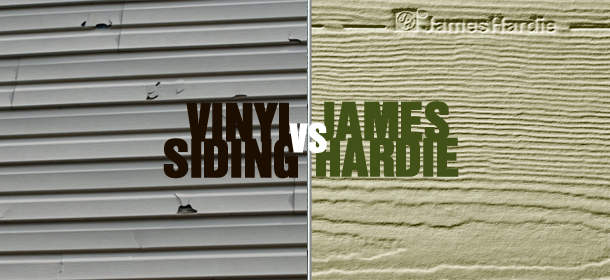Vinyl Siding or Hardie Board? What Is The Best Choice?
When it comes time to choose an outside siding product for your house, it may be appealing to choose the same siding as your next-door neighbors, however there is another choice to consider. Even if you stay in a neighborhood where vinyl siding is the “norm,” you can still get fiber cement siding. Likewise referred to as cement board or “Hardie Board,” fiber cement has lots of advantages and a couple of drawbacks. House owners must constantly think about the expense, the ease of maintenance, influence on house resale value and general appearance. Exactly what is gotten in one direction might be negated by a drawback in another, so all of it comes down to your individual top priorities.
1. Which siding will fit my spending plan? 2. Which is more crucial to me: Environment-friendly or Energy Saving? 3. Do I stay in an area with severe weather that will weaken my siding rapidly? 4. How frequently am I willing and able to do repair on my siding? 5. Can I be pleased with one color for my house or do I prefer to alter things up?
powered by.
Vinyl Siding.
Presented in the 1960s as an option to aluminum siding, vinyl siding has since become rather popular. Made from polyvinyl chloride, or PVC, it is an extremely durable and long lasting product that can be made to match the design of most homes. In the U.S., vinyl outside siding can be discovered on two times as numerous houses as any other siding product.
Fiber Cement Board.
Cement board siding in its existing kind was presented by James Hardie in the 1980s, hence the name “Hardie Board.” Like vinyl, it is likewise very hard wearing and durable, however it is much heavier to work with. A vinyl siding installer will need special training before being able to set up Hardie Board, but numerous property owners choose its authentic designer appearance. Both kinds of siding have their place and, depending on the house owner’s concerns, may have benefits over the other.
Durability.
Cement board siding has a certain edge in toughness. This item will typically feature a 30 to 50 year warranty. It is much less susceptible to weather damage and will withstand the effect of wind-blown particles much better too. Cement board does not alter much gradually. It doesn’t end up being breakable or lose strength. It continues to be one of the more trustworthy home solutions for siding choices on the market today.
Vinyl is less durable than cement board. It will require replacing much earlier too. It likewise ends up being breakable after long direct exposure to a hot sun, making it less ideal for a hot climate. When it becomes more breakable, it is much more easily damaged, then even a heavy hail storm can trigger damage to the siding. Wind-blown debris will absolutely position a possible hazard to a vinyl siding that has been up for a long time and end up being brittle. Vinyl siding will typically have a 25 year warranty.
Energy effectiveness.
Because vinyl siding came onto the scene in the 1960s, energy effectiveness has actually become far more essential to the average house owner, however so has “green structure.” While cement board is barely considered energy-efficient it is a far more eco-friendly product than vinyl. Fiber cement board has bad insulating qualities, however few people depend on their siding item to provide insulation by itself. The “R-value” of cement board, or procedure of insulating qualities, is around R-0.50, which is extremely low when one thinks about that fiberglass matting has an R-value of R-19.
On its own, vinyl siding is no much better than cement board, nevertheless it is now possible to buy vinyl with built-in insulation. This insulated variety makes vinyl a stronger and more rigid material to work with. Its appeal has actually likewise made it possible to produce the product in a larger range of colors.
Upkeep.
When it comes to upkeep, vinyl definitely has the advantage. It never requires painting, and in fact, can not be painted. Cleaning can be performed through just washing down with a garden hose. One downside is that you are stuck with the color you buy for the lifetime of the product. This is not likely to be an issue for the majority of people, nevertheless. In addition, vinyl will certainly never rot or disintegrate.
Cement board requires painting every 5 to 10 years, or so. This has the advantage that you can alter the color of your home at this time if you opt to. Since cement board includes wood fibers, it can degrade over time if it is not installed appropriately, or not properly taken care of through routine painting and caulking.
Cost.
Vinyl is definitely the less costly of the two products, which is most likely why it is the more popular. Vinyl prices vary, however should be at least 10 % lower than cement board. However, cement board is normally acknowledged as having the higher overall quality, and is generally selected with the long-lasting view.
Setup.
Vinyl is normally the easier of the two materials to work with and install on a building. Cement board is heavy and it needs a minimum of 2 men to manage a board. Cutting cement board is also harder. It releases a harmful dust when sawn, and need to be cut with unique cutters. Vinyl, on the other hand, is very easy to deal with.
Both vinyl and cement board have their benefits and disadvantages as a siding product. Both offer special advantages that the other does not have, so it truly in lots of ways comes down to personal option.
Photo Thanks to Phanlop88/ FreeDigitalPhotos.net.




